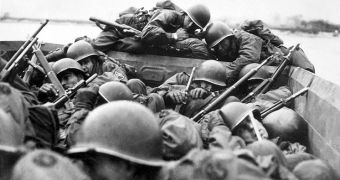As the Cold War finally wound down to a screeching halt, all forms of media, including radio, television, movies, songs, and now the Internet, have started depicting images of violence on a regular basis. Human suffering, war and misery have become standard news, and various outlets seem to have made it their stated goal to present as much of this as possible. But researchers have always wondered how it is that people are attracted to these forms of human depravity, and also about what compels the masses to indulge themselves in such horrific images, AlphaGalileo reports.
Such questions, and other reflections, will constitute the subject of an inaugural lecture called “Suffering and Sentiment in Romantic Military Art,” which will be presented by University of Leicester Professor Philip Shaw on Tuesday, February 16. He is also interested in analyzing the differences in perception of war that exist between the way we look at violence and conflict and the way our forefathers did. The expert will also be investigating why we have become immune to feeling any type of emotion except curiosity when seeing other people's misery displayed during the evening news, on the Internet, or in newspapers.
“There is no doubt that our consumption of war imagery is a form of ‘appetite’ in us, related at some level to the dark, unsettling aspects of the human psyche. This is not a new phenomenon. The notion of war as an object of desire, providing pleasure of a fearful or terrifying nature, has a long history. The eighteenth-century theorist Edmund Burke was not alone in regarding war as a source of the sublime. Then, as now, war is often presented to the public as a form of spectator sport. In the 21st century we gaze in rapt attention at television news coverage of the latest events in Iraq or Afghanistan, perhaps even enjoying, at some perverse level, the shocking sights of maimed and dismembered bodies,” he says.
“Our desire for entertainment leads, paradoxically, to a lessening of effect, which in turns feeds back into the insatiable demand for more footage, more shocking sights of woe. The technical vocabulary of ‘smart weaponry,’ ‘friendly fire,’ ‘surgical strike,’ ‘precision bombing,’ and ‘collateral damage’ contributes to this numbing effect. A combination of managerial, scientific and quasi-legal rhetoric conspires to mask the brute realities of war. I think the alienated spectator realizes at some level that something is missing, and it is perhaps the awareness of this absence that intensifies our wish to see more of that of which we are denied: the image of a body in pain, suffering on our behalf,” the expert concludes.

 14 DAY TRIAL //
14 DAY TRIAL //